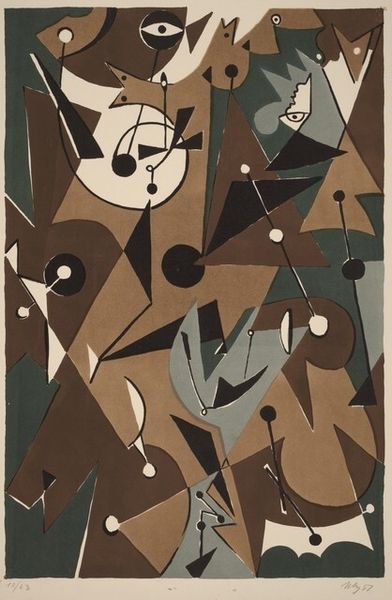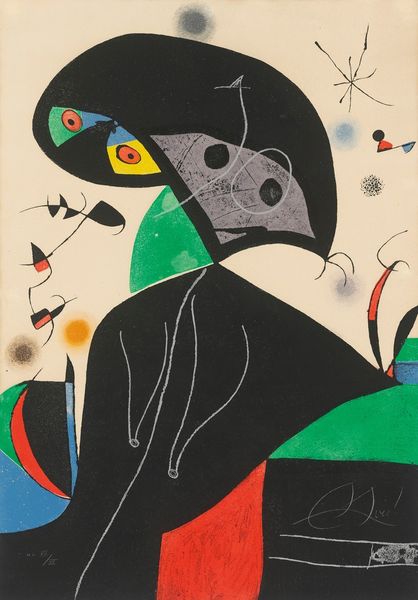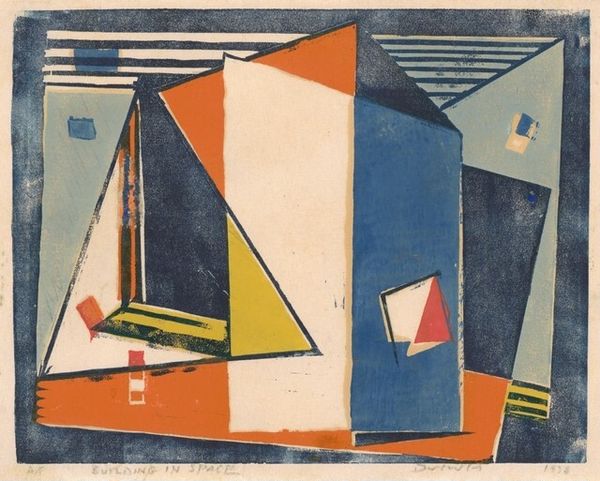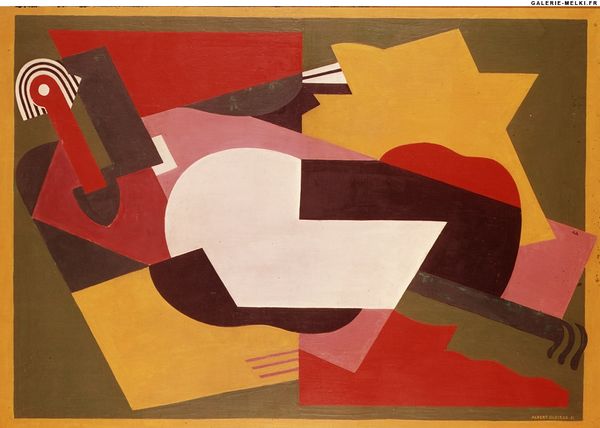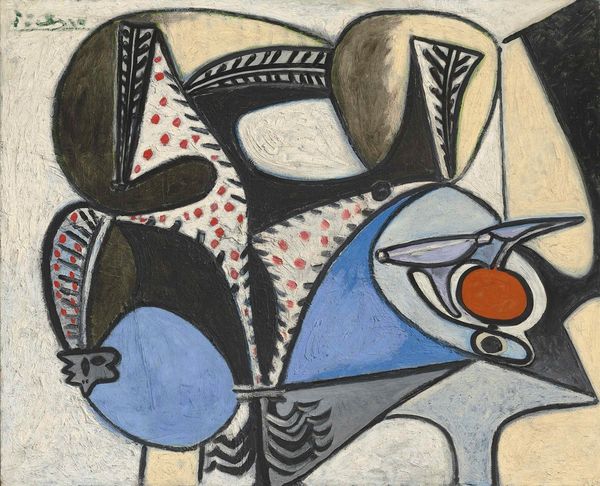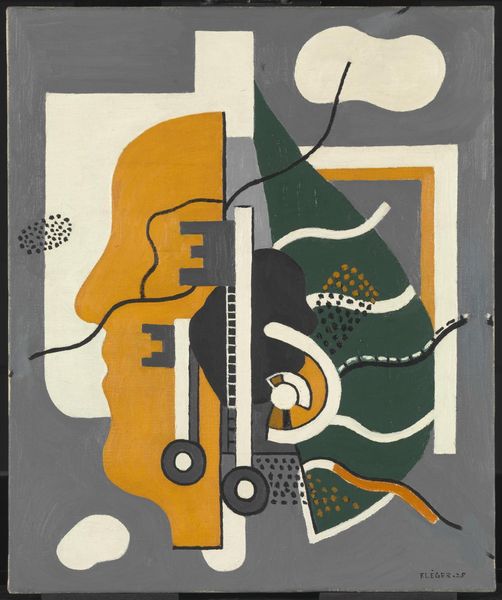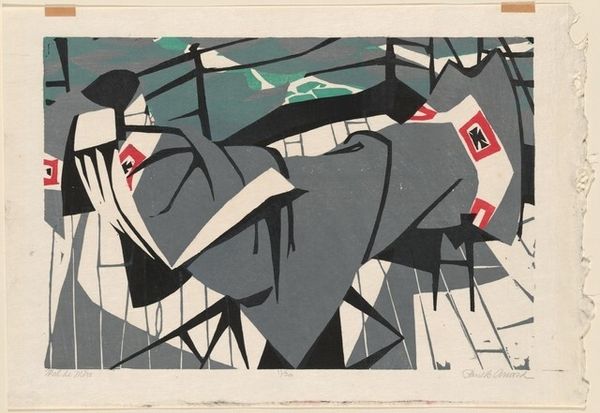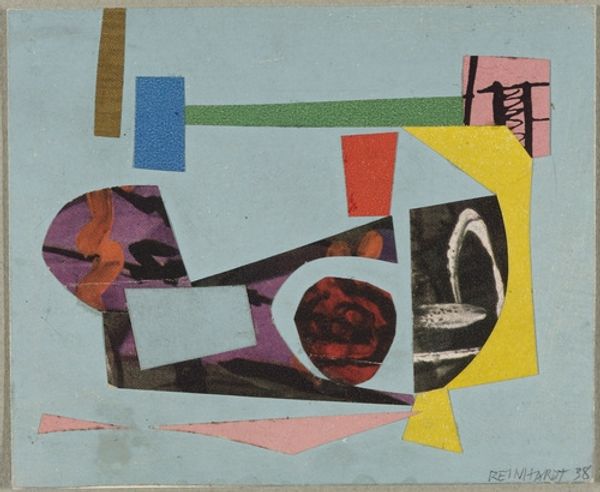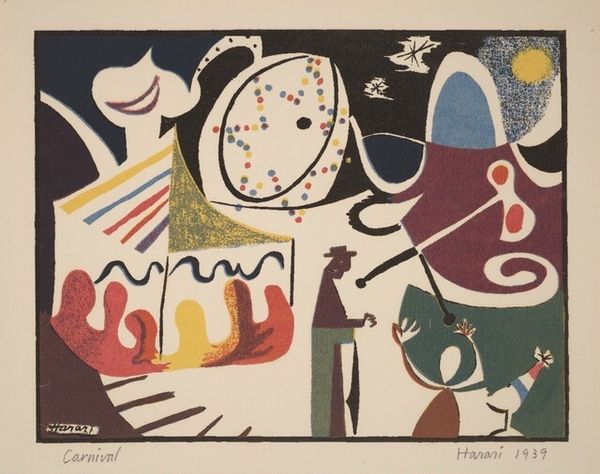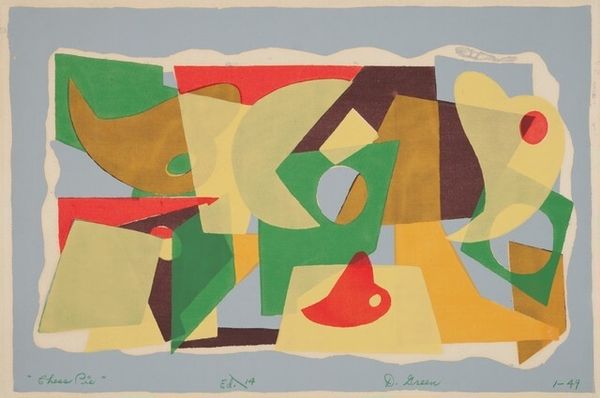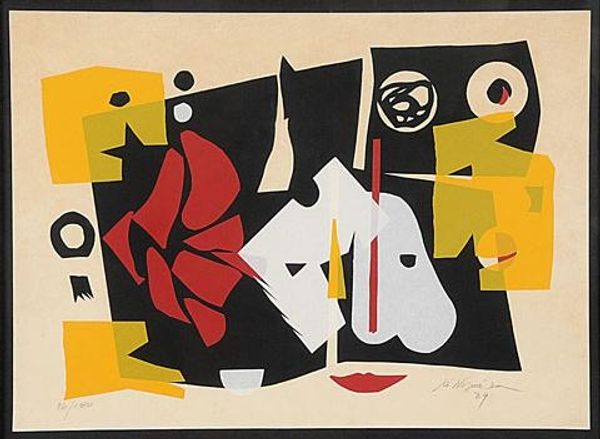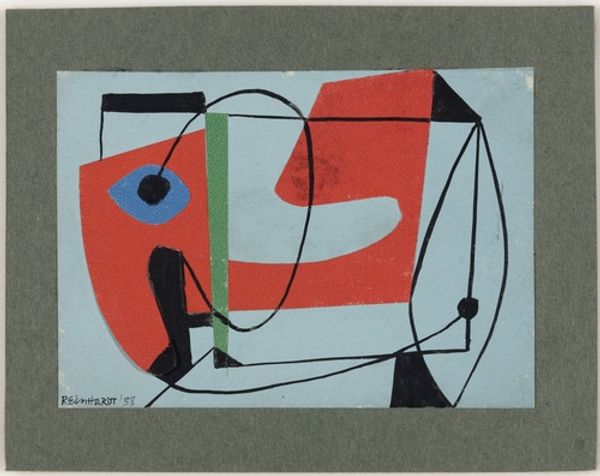
Dimensions: support: 600 x 918 mm frame: 842 x 1166 x 74 mm
Copyright: © ADAGP, Paris and DACS, London 2014 | CC-BY-NC-ND 4.0 DEED, Photo: Tate
Editor: Fernand Léger’s "Playing Card and Pipe," held at the Tate, presents a collection of geometric forms and everyday objects. I'm struck by its playful composition and the contrast of organic and inorganic shapes. What do you see in this piece in terms of its cultural significance? Curator: It's fascinating to consider Léger's work within the context of early 20th-century industrialization. How do you think the painting reflects the changing relationship between humans and machines in that era? Notice how the simplified forms and bold colors celebrate the beauty of the modern machine age, rejecting traditional artistic conventions. Editor: That's interesting, I hadn't thought of it in terms of the machine age, so this work is a commentary on the period? Curator: Indeed, Léger saw the potential for art to engage with and reflect the new industrial landscape. Do you see any echoes of this in contemporary art? Editor: I think I have a better understanding now of how art reflects its time. Thanks.
Comments
tate 7 months ago
⋮
http://www.tate.org.uk/art/artworks/leger-playing-card-and-pipe-n05991
Join the conversation
Join millions of artists and users on Artera today and experience the ultimate creative platform.
tate 7 months ago
⋮
Playing cards and clay pipes had been common elements in Cubist still life paintings of the period circa 1910-14. They introduced a measure of easy legibility, as well as a note of simple domesticity, into these 'difficult' works. In incorporating a playing card and pipe in this painting Léger seems to have been alluding to the earlier avant-garde movement. However, he chose to combine them with types of imagery that were antithetical to Cubism: organic nature (the leaves) and abstraction (the geometric and irregular shapes). In this period he was concerned above all with synthesising different styles of contemporary modernist painting. Gallery label, August 2004
